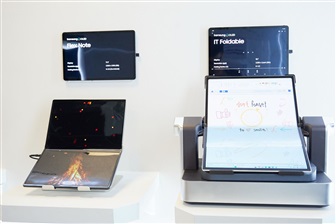
Intel and Micron Technology have jointly introduced a 25nm NAND flash production process technology, which they say provides a more cost-effective path for increasing storage capacity in today's consumer gadgets including smartphones and personal music and media players (PMPs), as well as SSDs.
Manufactured by IM Flash Technologies, the 25nm process produces 8GB of storage in a single NAND device. It measures 167mm-square.
The 25nm, 8GB device is sampling now and is expected to enter mass production in the second quarter of 2010, according to their joint announcement.

Samsung HKMG DDR5
Samsung Electronics has expanded its DDR5 DRAM memory portfolio with a 512GB DDR5 module...
Photo: Company

Nvidia GeForce RTX 30 series GPUs
Nvidia's GeForce RTX 30 series GPUs are powered by the company's Ampere architecture. The...
Photo: Company

Apple HomePod mini
Apple's HomePod mini is the newest addition to the HomePod family. At just 3.3 inches tall,...
Photo: Company

Apple 13-inch MacBook Pro with Magic Keyboard
Apple has updated the 13-inch MacBook Pro with the new Magic Keyboard for an improved typing...
Photo: Company

Apple iPad Pros
Apple's new iPad Pros comes with the latest A12Z Bionic chip, an ultra-wide camera, studio-quality...
Photo: Company
- Musk says chip capacity will decide winner of AI race (Mar 21) - EE Times
- Google taps MediaTek for cheaper AI chips (Mar 17) - The Information
- European project gets $260 million for HPC chip sovereignty (Mar 6) - EE Times
- The trouble with MAGA's chipmaking dreams (Mar 3) - Economist
- Automotive chips: Gloom and doom or boom by 2030? (Feb 14) - EE Times
- Deepseek is more Wall Street than Silicon Valley (Feb 3) - Culpium, by Tim Culpan
- Tech CEOs try to reassure Wall Street after DeepSeek shock (Jan 30) - Wall Street Journal
- TSMC to make chips for cryptominer Bitdeer at new US fab (Jan 17) - Culpium, by Tim Culpan
![]() Exclusive interview: Superb timing on the release of 'A Chip Odyssey'
Exclusive interview: Superb timing on the release of 'A Chip Odyssey'Unlike semiconductor manufacturing processes, time is never an element that filmmakers can control...
![]() 3Q25 outlook
3Q25 outlookThis is likely due to the uncertainty caused by the US's ever-changing tariff policies, its ongoing trade conflict with China, and a rather volatile...

South Korea panel maker business status
South Korea's two major panel makers have made progress in restructuring their businesses and will continue to strengthen OLED...

Trump reciprocal tariff impact on global industries
US President Donald Trump's implementation of reciprocal tariffs marked a significant shift in global trade dynamics and despite...

Global server supply chain status and analysis, 2023-2025
DIGITIMES conducted a thorough investigation of major Taiwanese and Chinese EMS providers' production sites, analyzing over...






